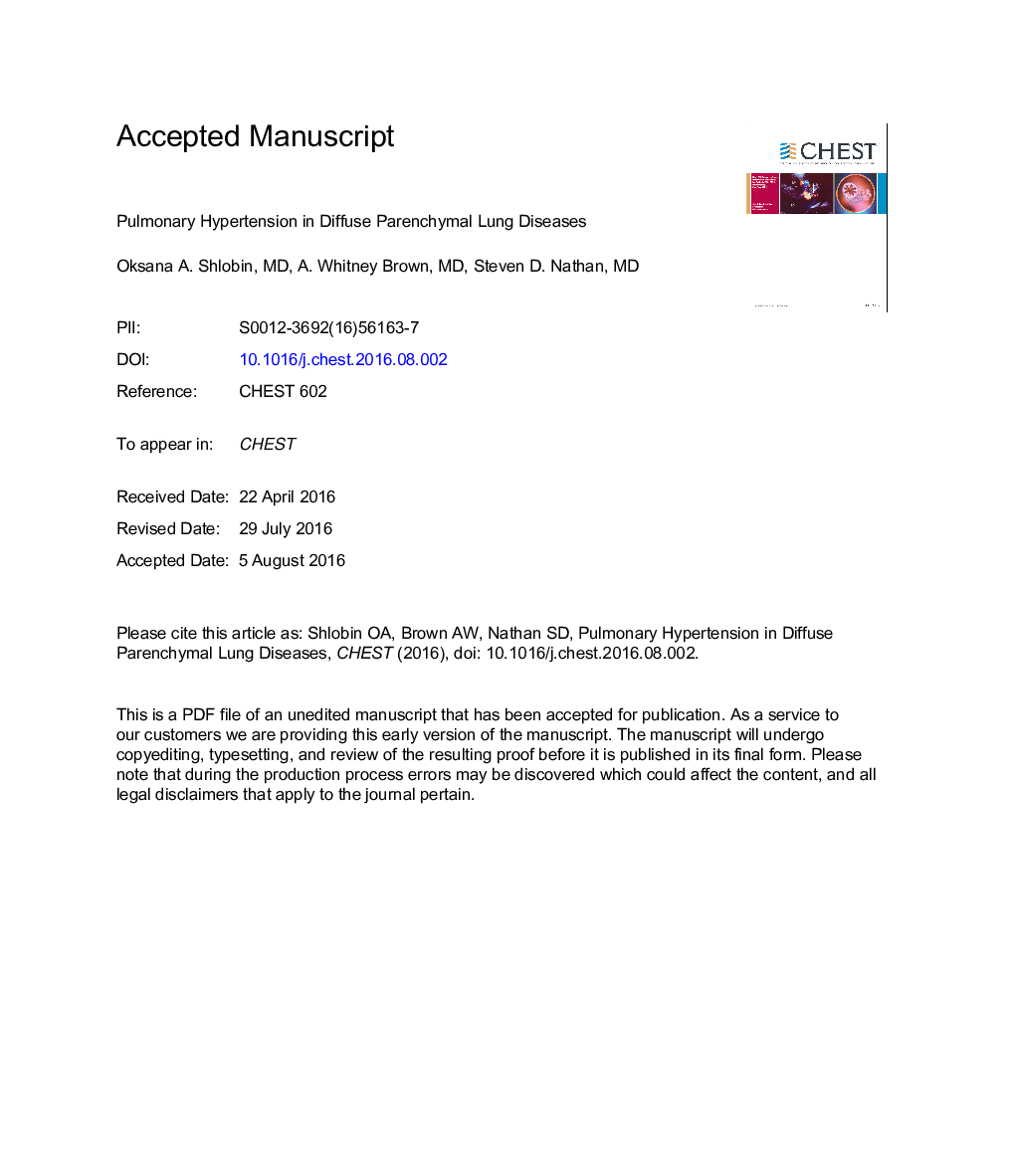| Article ID | Journal | Published Year | Pages | File Type |
|---|---|---|---|---|
| 5601061 | Chest | 2017 | 25 Pages |
Abstract
Pulmonary hypertension (PH) can be triggered by any number of disease processes that result in increased pulmonary vascular resistance. Although historically associated with idiopathic pulmonary arterial hypertension (PAH), most patients with PH do not have the idiopathic subtype, but rather PH associated with another underlying diagnosis, such as left heart or lung disease. The World Health Organization (WHO) classification of PH helps conceptualize the different categories based on presumed etiology. WHO group 3 is PH associated with lung disease. This review focuses on PH in diffuse parenchymal lung diseases (DPLDs), such as the idiopathic interstitial pneumonias and other more rare forms of DPLD. Although there are clear associations of PH with DPLD, the exact pathophysiologic mechanisms and full clinical significance remain uncertain. Treatment of PH related to DPLD remains investigational, but an area of great interest given the negative prognostic implications and the growing number of available pulmonary vasoactive agents.
Keywords
Related Topics
Health Sciences
Medicine and Dentistry
Cardiology and Cardiovascular Medicine
Authors
Oksana A. MD, A. Whitney MD, Steven D. MD,
